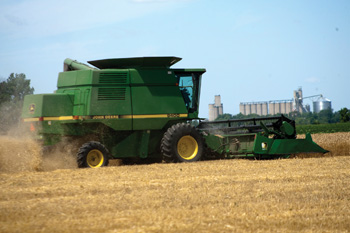 For those interested in careers in the agricultural market, the future should remain bright despite consolidation and tighter controls by the OEMs. The past few years have been some of the best ever seen in this industry, as farmers in most areas of the country have enjoyed record yields along with increased crop prices.
For those interested in careers in the agricultural market, the future should remain bright despite consolidation and tighter controls by the OEMs. The past few years have been some of the best ever seen in this industry, as farmers in most areas of the country have enjoyed record yields along with increased crop prices.
This good news for farmers trickles down to other businesses involved in agriculture, such as the implement dealers and manufacturers of farm equipment, as well as those who service the engine, hydraulics and mechanical functions of this equipment.
Plowing Through the Data
While last year’s tractor sales were down about 20% combine sales were up nearly that same amount. Used tractor sales are also seeing an increase of around 20%, with a corresponding increase in prices, a sure sign of the increased demand for used equipment.
While you will probably not see much work from the newer models of tractors, other than maybe some warranty work for the manufacturer or dealer, the increased demand for used equipment should be welcome news to all of you. While you will seldom get engine work on the new tractors, the used equipment does need you. In fact, many Ag shops already servicing this market are working to cultivate some new customers.
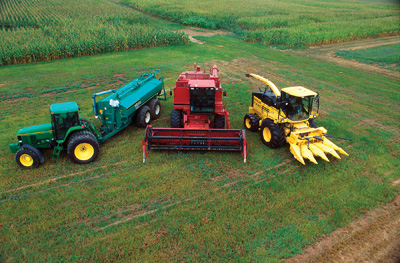 Most Ag equipment is never retired; it continues to be used on the farm. It is not uncommon to see tractors that are 50-years-old or older still being used regularly in rural areas. While the smaller models may be relegated to a utility job, the larger models are still being used regularly in the fields. They will all need your services sooner or later.
Most Ag equipment is never retired; it continues to be used on the farm. It is not uncommon to see tractors that are 50-years-old or older still being used regularly in rural areas. While the smaller models may be relegated to a utility job, the larger models are still being used regularly in the fields. They will all need your services sooner or later.
For instance, two of the more popular tractors ever produced were the John Deere 4020, and the International 1066. You will still see these and similar models being used on a large percentage of farms these days.
The 4020 was manufactured from 1963 until 1972 and John Deere produced and sold 57,000 of them. Think about it, even if you have one of the last models produced, it is still more than 35 years old! This model was produced with gasoline-, diesel- and propane-fueled engines.
Although the propane model was not produced after the late ’60s, I have seen them still working.
The 1066 was produced from 1971-1976 and was only available as a diesel. International produced 55,000 of them and I bet most are still out there working away. After more than 30 years, these tractors are still going strong.
These are just two of the more popular models over the years, but there are dozens more. They all have a few things in common; they are 20-50 years old, they are well designed and manufactured, and, they need a shop like yours at one time or another to keep them in tip-top shape.
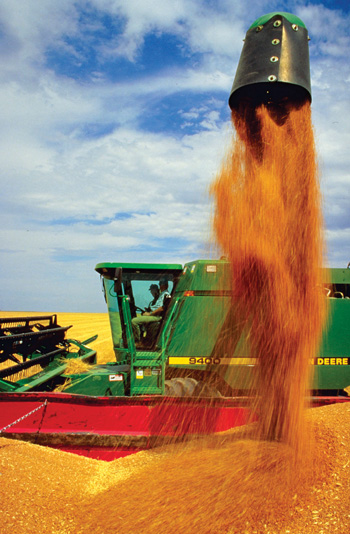 Growing Market
Growing Market
While the motorsports market could go away (though not likely), the agricultural market will always be here, it is a necessity. The world population is expected to increase by more than 20% by 2025. Food production will need to increase 50% by 2025 and is expected to double by 2050.
The increase in population and the corresponding increase in food needed to feed this growing population will mean agricultural machinery will be needed to help meet this demand. The equipment to plant, grow and harvest this food will continue to be needed in ever increasing numbers.
But, you also need to remember that the equipment used on the farm is just a small percentage compared to the overall agricultural market. There are many other “agri-businesses” that also use equipment powered by an internal combustion engine. And, even if you look at “just farms” the diversity of equipment is tremendous and where you are located in the country, determines the type of equipment you might see.
There are dozens of other agri-businesses out there that also use Ag-type equipment. It could be a fertilizer application company that uses those big three-wheeled Terra Gators we have all seen zooming across a field. It might be that cotton picker, cotton stripper or cotton gin in West Texas, or it could be a self-propelled swather such as a Massey Ferguson 9000 Series with a Cummins 110 hp engine.
You could also include the power units that run irrigation pumps in the South or the pivot irrigation sprinklers in the West. Or how about the engines that run emergency generators for poultry and hog operations.
Did You Know…
Agriculture in the United States generally falls under the following commodities: Animal products that would include aquaculture; cattle/beef; dairy; hogs/pork; poultry and eggs; and sheep/lamb and mutton. Crop commodities would include corn and feed grains; cotton and wool; floriculture and nursery; fruit and tree nuts; peanuts; rice; soybeans and oil crops; sugar and sweeteners; tobacco; vegetables and melons; and wheat.
Just browsing through that list of commodities show just how diverse agriculture is. Different methods, equipment and practices are used depending on where or what the commodity is. Just read the list and imagine the diversity of equipment needed to plant it, grow it, harvest it, get it to market and everything in between. But, while the equipment may be different, internal combustion engines power much of it.
Cultivating Customers
As a machine shop employee, you may also have the ability to solve a “problem” that some equipment may have. In motorsports, we tell you to get out to the track to find out what the racers need. For local farmers, that could mean getting out to the local diner where many congregate early in the morning. Remember, if you don’t understand the problems they may be having, you can’t solve them. Because of the age of some of this equipment, you may get the opportunity to manufacture parts for particular needs.
While most farms continue to extend the lives of their tractors for many years, they also use grain trucks until they rot out from under them. Although it is changing, for the most part, the small farmer that takes his crop to the local elevator may be using a truck that is 40-50 years old. These trucks may only be used during harvest and maybe planting season, putting less than 1,000 miles a year on them. They may look rough, but they will be mechanically sound with help from a shop like yours.
Tractor Trends
Manufacturers are building efficient engines that will last much longer; and these engines have become much more reliable, with most seeing 6,000 hours or more before any internal engine work is required. Manufacturers will
continue to improve these engines and components.
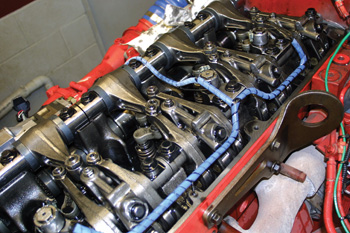 While in the past you may have had a rod, piston or maybe a valve spring fail, these days the parts are so much better that the majority of failures occur in the electronics and fuel systems. It may look like a mechanical failure, but that is where the experienced technician can determine the difference between a mechanical failure and an electronic or computer failure.
While in the past you may have had a rod, piston or maybe a valve spring fail, these days the parts are so much better that the majority of failures occur in the electronics and fuel systems. It may look like a mechanical failure, but that is where the experienced technician can determine the difference between a mechanical failure and an electronic or computer failure.
Not Just Tractors Down In Farmville
Depending on where you’re located, you may never work on a farm tractor or farm tractor engine. If you’re located in a big city, you could be seeking out work in other agri-businesses. Trucks, trains and ships are all used to transport farm commodities.
Are you located near a shipping port? Maybe you have expertise working on ship engines or the tractors and other power equipment used in a port. If you’re near a rail yard, remember, trains use an internal combustion engine to run the generators that power the electric motors that power the train.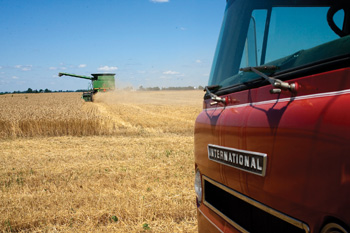
Trucks can be found virtually anywhere in the country. If you don’t already have some experience with diesels, perhaps it’s time to go back to school. In fact, if you don’t know diesels, you might simply need to forget about this market. While you might see some gasoline engines in 30-40 year old equipment, anything these days over about 20 horsepower will be a diesel other than maybe some lawn and garden equipment. For sure anything over 40 horsepower will be diesel powered.
Along with the industry moving to diesel power the last 20 years or so, truck manufacturers are also making the engines much more efficient, AND, nearly bulletproof.
Old-Timers
Although not strictly the “agricultural” market, another segment that is keeping many shops busy is rebuilding the engines from 60-70 year old antique tractors. Many of these tractors are restored to better than new condition by their owners and while some enthusiasts have the expertise for some of the restoration, most need to seek a professional for the engine rebuilding and/or machine work.
The antique tractor collector industry has grown tremendously in the past 20 years and continues to grow. Many of these tractors are used in antique tractor pulls and their owners spare no expense in their attempt to win. I have heard figures of $25,000 plus for competition pulling engines in John Deere B and Oliver 88s. There are shops out there specializing in the antique pulling market that have 12-month backlogs.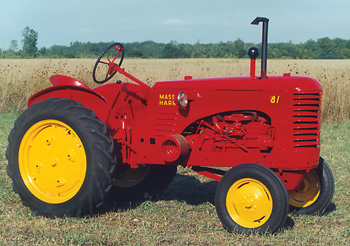
There are many related businesses that you might never consider an agribusiness. Like the products it produces and supplies, the vehicles used in the agricultural market are extremely diverse. Of course the bottom line is this: if it has an internal combustion engine, then it is a market you should be cultivating.


